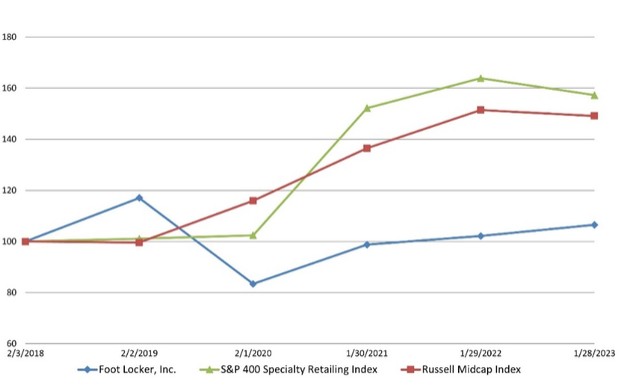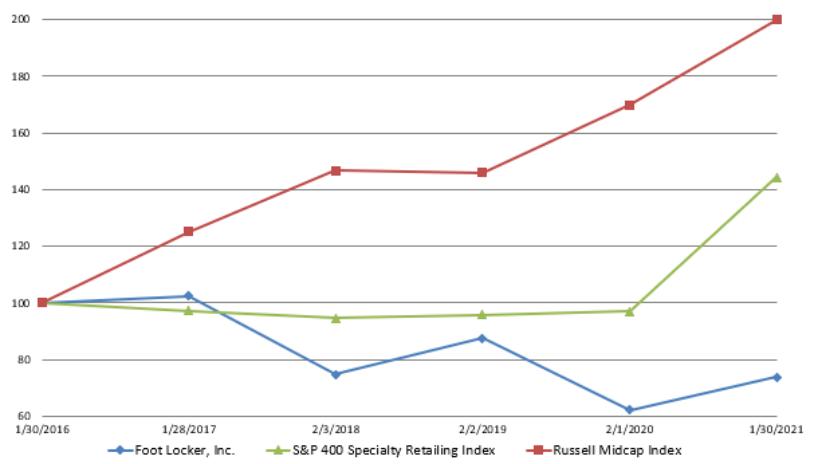CAUTIONARY NOTE REGARDING FORWARD-LOOKING STATEMENTS This Annual Report on Form 10-K (“Annual Report”) includes “forward-looking” statements within the meaning of the Private Securities Litigation Reform Act of 1995. Forward-looking statements can be identified by the fact that they do not relate strictly to historical or current facts. They often include words such as “believes,” “expects,” “anticipates,” “estimates,” “intends,” “plans,” “seeks,” “continues,” “feels,” “forecasts,” or words of similar meaning, or future or conditional verbs, such as “will,” “should,” “could,” “may,” “aims,” “intends,” or “projects.” Statements may be forward looking even in the absence of these particular words. Examples of forward-looking statements include, but are not limited to, statements regarding our financial position, business strategy, and other plans and objectives for our future operations, and generation of free cash flow. These forward-looking statements are based on our current expectations and beliefs concerning future developments and their potential effect on us. The forward-looking statements contained herein are largely based on our expectations for the future, which reflect certain estimates and assumptions made by our management. These estimates and assumptions reflect our best judgment based on currently known market conditions, operating trends, and other factors. Although we believe such estimates and assumptions to be reasonable, they are inherently uncertain and involve a number of risks and uncertainties that are beyond our control. As such, management’s assumptions about future events may prove to be inaccurate. We do not intend to publicly update or revise any forward-looking statements as a result of new information, future events, changes in circumstances, or otherwise. These cautionary statements qualify all forward-looking statements attributable to us, or persons acting on our behalf. Management cautions you that the forward-looking statements contained herein are not guarantees of future performance, and we cannot assure you that such statements will be realized or that the events and circumstances they describe will occur. Factors that could cause actual results to differ materially from those anticipated or implied in the forward-looking statements herein include, but are not limited to, a change in the relationship with any of our key suppliers, including the unavailability of premium products at competitive prices, volume discounts, cooperative advertising, markdown allowances, or the ability to cancel orders and return merchandise; our ability to fund our planned capital investments; volatility in the financial markets or other global economic factors; our ability to access the credit markets at competitive terms; difficulties in appropriately allocating capital and resources among our strategic opportunities; our ability to realize the expected benefits from acquisitions; business opportunities and expansion; investments; expenses; dividends; share repurchases; liquidity; cash flow from operations; use of cash and cash requirements; borrowing capacity under our credit facility; repatriation of cash to the United States; supply chain issues; labor shortages and wage pressures; expectations regarding increased wages; inflation; consumer spending levels; the effect of governmental assistance programs;, including vaccines and safety protocols; expectations regarding increasing global taxes; the effect of increased government regulation, compliance, and changes in law; the effect of the adverse outcome of any material litigation against us or judicial decisions that affect us or our industry generally; the effects of weather; climate change; ESG risks; increased competition; geopolitical events; the financial effect of accounting regulations and critical accounting policies; credit risk relating to the risk of loss as a result of non-performance by our counterparties; and any other factors set forth in the section entitled “Risk Factors” in this Annual Report. All written and oral forward-looking statements attributable to us are expressly qualified in their entirety by this cautionary statement. A forward-looking statement is neither a prediction nor a guarantee of future events or circumstances, and those future events or circumstances may not occur. You should not place undue reliance on forward-looking statements, which speak to our views only as of the date of this filing. Additional risks and uncertainties that we do not presently know about or that we currently consider to be insignificant may also affect our business operations and financial performance. Please refer to “Item 1A. Risk Factors” in this Annual Report for a discussion of certain risks relating to our business and any investment in our securities. Given these risks and uncertainties, you should not rely on forward-looking statements as predictions of actual results. Any or all of the forward-looking statements contained in this report, or any other public statement made by us, including by our management, may turn out to be incorrect. We are including this cautionary note to make applicable, and take advantage of, the safe harbor provisions of the Private Securities Litigation Reform Act of 1995 for forward-looking statements. We expressly disclaim any obligation to update or revise any forward-looking statements, whether as a result of new information, future events, or otherwise. PART I Item 1. Business General Foot Locker, Inc., incorporated under the laws of the State of New York in 1989. Foot Locker, Inc. and its subsidiaries hereafter are referred to as the “Registrant,” “Company,” “we,” “our,” or “us.” Foot Locker, Inc. has its corporate headquarters in New York. Foot Locker, Inc. is a leading footwear and apparel retailer that unlocks the “inner sneakerhead” in all of us. As of January 28, 2023, we operated 2,714 stores in 29 countries across North America, Europe, Australia, New Zealand, and Asia, and a franchised store presence in the Middle East and Asia. Foot Locker, Inc. has a strong history of sneaker authority that sparks discovery and ignites the power of sneaker culture through its portfolio of brands, including Foot Locker, Kids Foot Locker, Champs Sports, WSS, and atmos. Ensuring that our customers can engage with us in the most convenient manner for them whether in our stores, on our website, or on our mobile application, is a high priority for us. We use our omni-channel capabilities to bridge the digital world and physical stores, including order-in-store, buy online and pickup-in-store, and buy online and ship-from-store, as well as e-commerce. We operate websites and mobile apps aligned with the brand names of our store banners. These sites offer some of the largest online product selections and provide a seamless link between e-commerce and physical stores. The service marks, tradenames, and trademarks appearing in this report (except for Nike, Jordan, adidas, and Puma) are owned by Foot Locker, Inc. or its subsidiaries. Store and Operations Profile | | | | | | | | | | | | | | | | | | | | | | | | | | | Square Footage | | | January 29, | | | | | | January 28, | | Relocations/ | | (in thousands) | | | 2022 | | Opened | | Closed | | 2023 | | Remodels | | Selling | | Gross | Foot Locker U.S. (1) | | 816 | | 31 | | 100 | | 747 | | 37 | | 2,362 | | 4,044 | Foot Locker Canada | | 95 | | 1 | | 10 | | 86 | | 4 | | 249 | | 412 | Kids Foot Locker | | 410 | | 22 | | 22 | | 410 | | 22 | | 772 | | 1,306 | Champs Sports | | 525 | | 3 | | 42 | | 486 | | 6 | | 1,792 | | 2,809 | WSS | | 98 | | 17 | | — | | 115 | | 4 | | 1,138 | | 1,435 | Footaction (2) | | 41 | | — | | 39 | | 2 | | — | | 6 | | 11 | North America | | 1,985 | | 74 | | 213 | | 1,846 | | 73 | | 6,319 | | 10,017 | Foot Locker Europe | | 626 | | 20 | | 18 | | 628 | | 24 | | 1,131 | | 2,329 | Sidestep | | 86 | | 1 | | 9 | | 78 | | — | | 97 | | 186 | EMEA | | 712 | | 21 | | 27 | | 706 | | 24 | | 1,228 | | 2,515 | Foot Locker Pacific | | 94 | | 1 | | 1 | | 94 | | 15 | | 213 | | 325 | Foot Locker Asia | | 30 | | 3 | | — | | 33 | | — | | 126 | | 233 | atmos | | 37 | | 4 | | 6 | | 35 | | 3 | | 37 | | 63 | Asia Pacific | | 161 | | 8 | | 7 | | 162 | | 18 | | 376 | | 621 | Total owned stores | | 2,858 | | 103 | | 247 | | 2,714 | | 115 | | 7,923 | | 13,153 | | | | | | | | | | | | | | | | Franchised stores | | 142 | | 33 | | 16 | | 159 | | | | | | | Grand Total | | 3,000 | | 136 | | 263 | | 2,873 | | | | | | |
| (1) | | | Chairman, President and Chief Executive Officer
|
| Richard A. Johnson
| Executive Vice President and Chief Executive Officer — North America
|
| Frank Bracken
| Executive Vice President and Chief Commercial Officer
|
| Andrew Gray
| Executive Vice President and Chief Executive Officer — Asia Pacific and Chief Strategy Officer
|
| W. Scott Martin
| Executive Vice President and Chief Financial Officer
|
| Lauren B. Peters
| Executive Vice President and Chief Executive Officer — EMEA
|
| Vijay Talwar
| Senior Vice President and Chief Accounting Officer
|
| Giovanna Cipriano
| Senior Vice President, General Counsel and Secretary
|
| Sheilagh M. Clarke
| Senior Vice President — Global Supply Chain
|
| Todd Greener
| Senior Vice President and Chief Human Resources Officer
|
| Elizabeth S. Norberg
| Senior Vice President and Chief Information Officer
|
| Himanshu Parikh
| Vice President, Treasurer
|
| John A. Maurer
|
Richard A. Johnson, age 63, has served as Chairman of the Board since May 2016Includes 14 and President and Chief Executive Officer since December 2014.
Frank Bracken, age 48, has served as Executive Vice President and Chief Executive Officer — North America since July 22, 2020. He previously served as Senior Vice President and General Manager Foot Locker,6 Lady Foot Locker stores as of January 29, 2022 and Kids Foot Locker from October 2017 through July 2020. Mr. Bracken previously served asJanuary 28, 2023, respectively.
|











